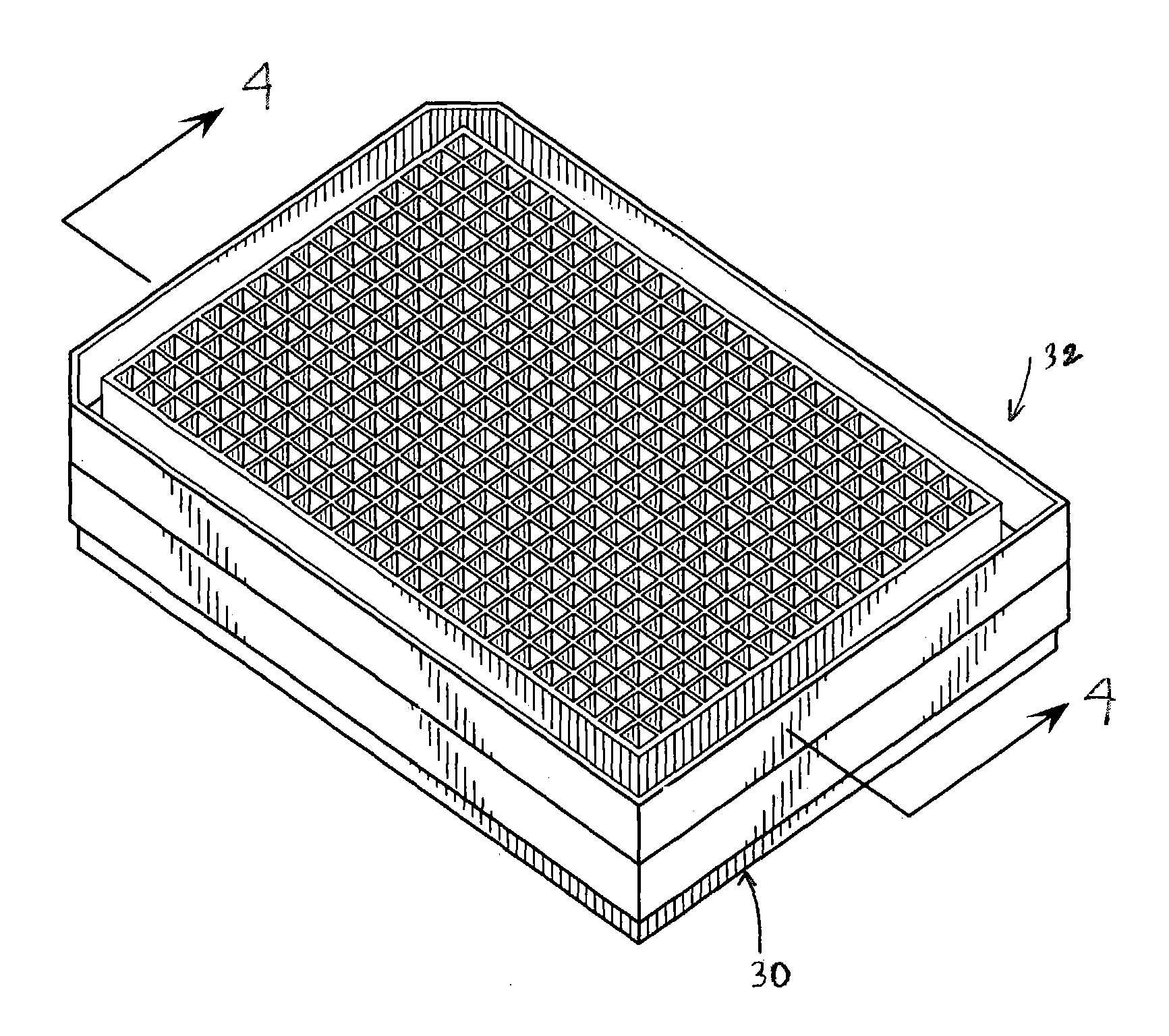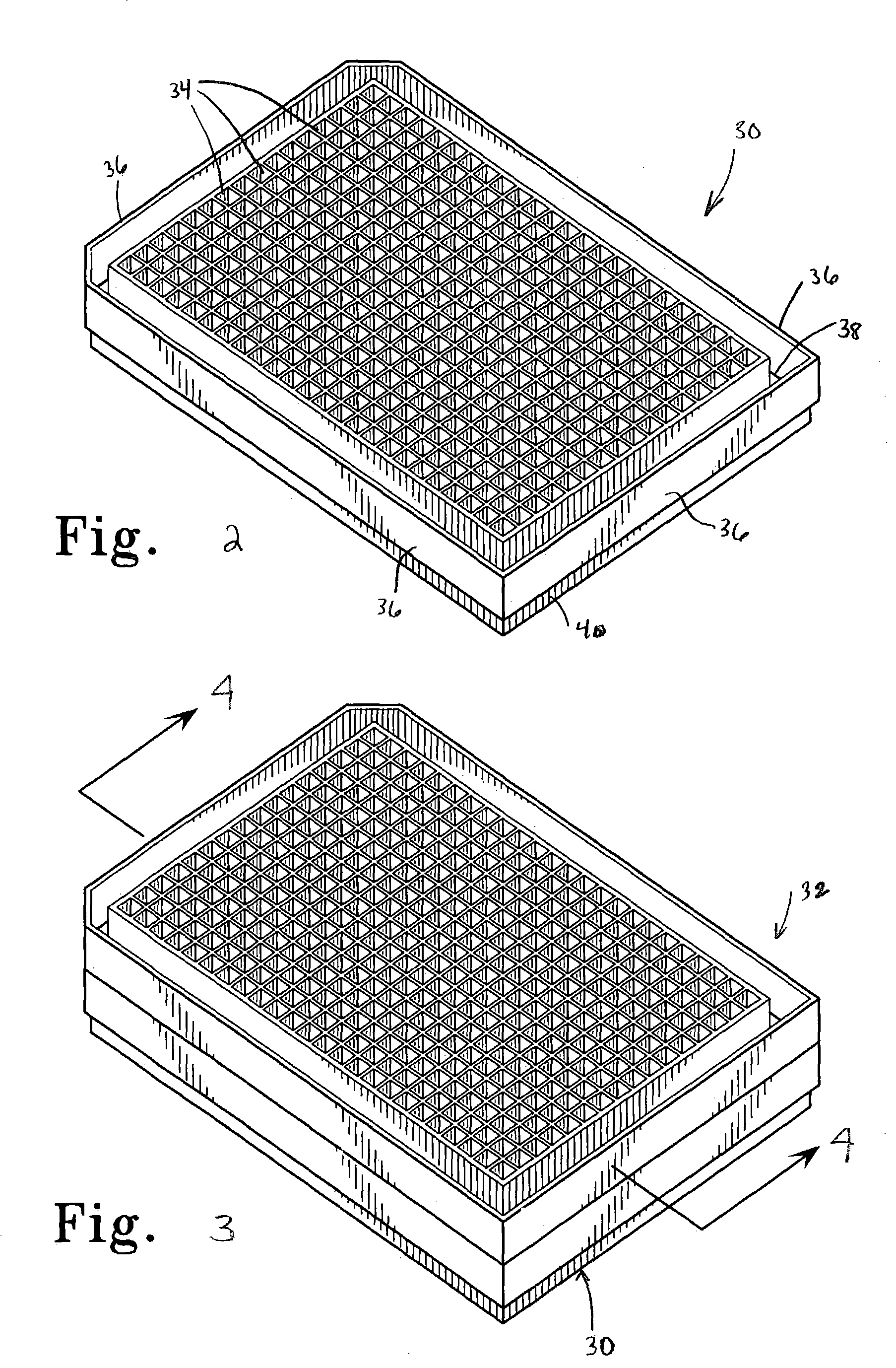Methods and apparatus for minimizing evaporation of sample materials from multiwell plates
a multi-well plate and sample material technology, applied in the field of multi-well plate, can solve the problems of evaporation of samples, disturbed wells around the periphery or the corners of multi-well plates, too much air to flow to the wells, etc., and achieve the effect of reducing or substantially reducing the problem of excessive evaporation of sample materials
- Summary
- Abstract
- Description
- Claims
- Application Information
AI Technical Summary
Benefits of technology
Problems solved by technology
Method used
Image
Examples
Embodiment Construction
[0024]The present invention provides novel methods and apparatus for minimizing evaporation of sample materials from multiwell plates, particularly when such plates are placed into a stacked configuration with one or more additional multiwell plates as is typical in usage in HTS systems, for example. It is to be understood, however, that the teachings of the present invention are in no way to be limited to their use in HTS systems as are generally described below, but can be used in any system or apparatus in which it is necessary to store one or more multiwell plates in a stacked (or unstacked) configuration prior to sampling of the sample components within the wells of the plates.
[0025]Referring first to FIG. 1, an exemplary HTS system 10 for screening large numbers of different compounds for their effects in a wide variety of chemical, and particularly biochemical systems, is shown. HTS system 10 generally manipulates samples by translating individual multiwell plates 12, which a...
PUM
 Login to View More
Login to View More Abstract
Description
Claims
Application Information
 Login to View More
Login to View More - R&D
- Intellectual Property
- Life Sciences
- Materials
- Tech Scout
- Unparalleled Data Quality
- Higher Quality Content
- 60% Fewer Hallucinations
Browse by: Latest US Patents, China's latest patents, Technical Efficacy Thesaurus, Application Domain, Technology Topic, Popular Technical Reports.
© 2025 PatSnap. All rights reserved.Legal|Privacy policy|Modern Slavery Act Transparency Statement|Sitemap|About US| Contact US: help@patsnap.com



